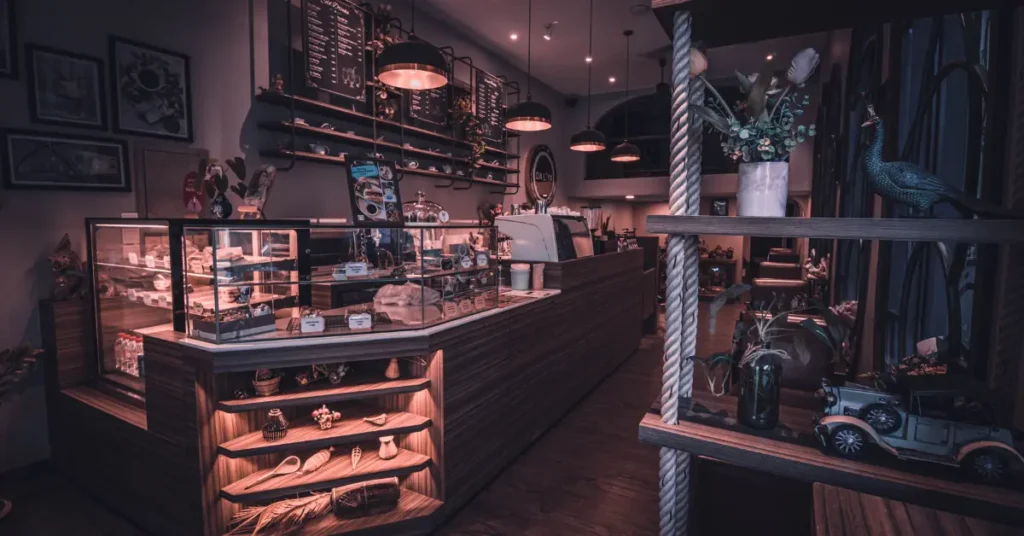A Guide to Design a Shop Interior as an Interior Designer: Tips and Tricks

In the dynamic realm of retail, a shop’s interior design plays a pivotal role in attracting customers, enhancing their shopping experience, and ultimately driving sales. As an interior designer, you wield the power to transform spaces into captivating environments that reflect a brand’s identity while optimizing functionality. Whether you’re revamping an existing store or conceptualizing a new one from scratch, mastering the art of shop interior design requires a blend of creativity, strategic thinking, and a deep understanding of consumer behavior. In this comprehensive guide, we’ll delve into the essential principles and practical tips to help you navigate the intricacies of designing a shop interior that leaves a lasting impression.
Understanding the Brand Identity
Before diving into the design process, it’s crucial to grasp the essence of the brand you’re working with. Every brand has a unique identity, encompassing its values, personality, and target audience. Start by conducting thorough research to gain insights into the brand’s history, vision, and target market. Analyze their branding elements, such as logos, color schemes, and typography, as these will serve as the foundation for your design concepts. By aligning your design decisions with the brand’s identity, you can create a cohesive and authentic shopping environment that resonates with customers on a deeper level.
Creating a Functional Layout
The layout of a shop interior significantly influences the flow of customer traffic and their overall shopping experience. A well-designed layout should seamlessly guide customers through the space, optimizing visibility and accessibility to products. Begin by zoning different areas of the shop based on their function, such as the entrance, display areas, checkout counter, and fitting rooms. Consider factors like sightlines, pathways, and focal points to ensure a logical and intuitive layout. Experiment with various configurations to find the most efficient arrangement that maximizes both space utilization and customer engagement.
Strategic Visual Merchandising
Visual merchandising is a powerful tool for showcasing products and stimulating purchasing decisions. As an interior designer, you have the creative freedom to curate compelling displays that captivate customers and drive sales. Start by selecting a focal point within the shop—a prominent display area where you can feature key products or seasonal promotions. Use lighting, signage, and props to draw attention to these displays and create a sense of visual interest. Experiment with different display techniques, such as color blocking, storytelling, and sensory experiences, to evoke emotions and inspire impulse purchases.
Harnessing the Power of Lighting
Lighting plays a crucial role in setting the mood and ambiance of a shop interior. Strategic lighting design can enhance product visibility, highlight architectural features, and create a welcoming atmosphere for customers. Experiment with a combination of ambient, task, and accent lighting to achieve the desired effect. Natural light can also be leveraged to create a sense of openness and connection with the outside world. Additionally, consider the color temperature of lighting fixtures, as warmer tones tend to evoke a cozy ambiance, while cooler tones exude a modern and vibrant feel.
Incorporating Branding Elements
Branding elements serve as visual cues that reinforce the identity of the shop and leave a lasting impression on customers. Integrate brand elements seamlessly into the interior design to create a cohesive and immersive experience. This could involve incorporating the brand’s logo into signage, using branded colors in decor accents, or even customizing fixtures and furniture to reflect the brand’s aesthetic. By infusing the space with branded touches, you create a sense of familiarity and loyalty among customers, ultimately strengthening their connection to the brand.
Prioritizing Comfort and Convenience
In addition to aesthetics, it’s essential to prioritize the comfort and convenience of customers when designing a shop interior. Pay attention to factors such as seating areas, fitting rooms, and checkout queues to ensure a hassle-free shopping experience. Choose comfortable seating options where customers can rest and recharge, especially in areas with high foot traffic. Ensure that fitting rooms are spacious, well-lit, and equipped with mirrors and hooks for convenience. Streamline the checkout process by minimizing wait times and providing ample counter space for transactions.
Embracing Flexibility and Adaptability
The retail landscape is constantly evolving, and shop interiors must be able to adapt to changing trends and consumer preferences. Embrace flexibility in your design approach by incorporating modular fixtures, movable displays, and versatile furniture arrangements. This allows the shop to easily reconfigure its layout and update its merchandise to keep up with seasonal changes or promotional events. Additionally, leverage technology to enhance the shopping experience, whether through interactive displays, digital signage, or mobile payment solutions. By staying agile and adaptable, you can future-proof the shop interior and ensure its long-term success.
Conclusion
In conclusion, designing a shop interior as an interior designer is a multifaceted endeavor that requires a blend of creativity, strategy, and practicality. By understanding the brand identity, creating a functional layout, employing strategic visual merchandising, harnessing the power of lighting, incorporating branding elements, prioritizing comfort and convenience, and embracing flexibility and adaptability, you can create captivating shopping environments that resonate with customers and drive business growth. With careful planning and attention to detail, you have the power to transform ordinary spaces into extraordinary retail destinations that leave a lasting impression.












